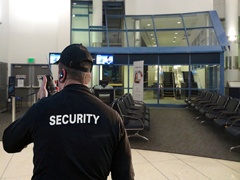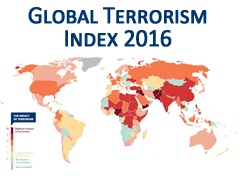Concealment is the act of hiding or preventing something from being known. It happens more often than we’d like, ranging from minor infractions to major threats to our security. The unknown variable of who may or may not try to sneak items passed the checkpoint constantly requires security personnel to be on guard.
Fortunately, personnel are trained to detect anomalies and pick up on various concealment methods used by these offenders. Let’s discuss concealment and some creative tactics observed in the industry that all checkpoint staff should be aware of.
Read More
Topics:
Aviation Security,
General Security,
Cargo Security,
Ports & Borders,
Critical Infrastructure,
Transportation
Air cargo has always been a target for those wanting to cause harm to the transport industry. One of the ways they’ve done that is by concealing explosive devices into air freight on both cargo and passenger aircraft. Unfortunately, successful attempts have led to catastrophic consequences including severe damage to airline assets, disruption of the industry, and loss of life.
That’s why air cargo screening remains an imperative step in maintaining security. Without it, the industry would be incredibly vulnerable to explosive threats. Proper diligence must be exercised to protect the air cargo industry, the people working in it, and those utilizing its services.
Read More
Topics:
Aviation Security,
Cargo Security,
Security Threats,
Transportation
Today’s passenger and cabin baggage screening process is functional and airports manage to get by, but it is not sustainable in the long run given the industry’s predicted growth. The current screening model is inefficient and comes at the cost of many within the industry including airlines and passengers. For the past few years, several airports have shifted their attention to Smart Security solutions to handle the screening of passengers and their belongings.
Smart Security is a joint initiative of the International Air Transport Association (IATA) and Airports Council International (ACI). Its goal is to streamline the passenger journey from curb to airside. The idea of Smart Security has been around for a few years now and the industry is just now able to implement these ideas into practical solutions without sacrificing safety and security.
Read More
Topics:
Aviation Security,
Trends,
Critical Infrastructure,
Transportation
A new year means another year of security training. The thought of recurrent training usually re-enters the minds of training managers and administrators at this time of year. Sometimes seen as an overwhelming process, the anticipation of rolling out another year of security training to personnel can be stressful.
It’s not always easy to coordinate but if you know the basics and have the right tools, it can be much easier than anticipated. And when the time comes, you’ll be able to handle a compliance audit like a pro. First, let’s get down to discussing the basics of recurrent security training.
Read More
Topics:
Audit Preparation & Compliance,
Security Training,
Aviation Security,
Training & Development,
Cargo Security
Governments are the last line of defense when it comes to shaping policy concerning aviation security. Since there is no overarching global regulator to oversee all governments in every country, the handling of aviation security policy ultimately comes down to individual governments themselves.
As a result, the aviation industry faces challenges related to individual governments and how critical aviation security issues are handled by each. Industry desperately needs governments to overcome these obstacles in order to have a more secure and effective aviation market. Let’s discuss some governmental challenges in the aviation sector.
Read More
Topics:
Aviation Security,
Cargo Security,
Transportation
What does it mean to have strong aviation security culture? A strong aviation security culture is one in which security is a top priority for all staff. It means that security can never rest at the back of our minds; it must constantly be at the forefront. It also means that security cannot be an afterthought; it must be approached with a proactive mindset.
If we lose sight of the importance of aviation security for a moment, we risk becoming vulnerable to the imminent dangers that constantly pressure our industry. Security is everybody’s business. So, what can you do to build a strong aviation security culture within your company?
Read More
Topics:
Security Training,
Aviation Security,
Training & Development,
Cargo Security
As specific airports facing the large PEDs ban implement stricter security controls, governments have been lifting restrictions on a case by case basis. The personal electronic device (PED) ban prohibits passengers from carrying large electronics such as tablets, eReaders, and laptops aboard certain aircrafts flying direct from one airport to another.
The main concern centers on select airports with insufficient security measures in place to prevent a new type of threat from entering secure areas. Threat PEDs cleverly use everyday consumer electronics to conceal improvised explosive devices (IEDs). The resulting product is items such as laptop bombs. Airports worldwide must reevaluate current security controls and if necessary, implement additional measures to effectively intercept threat PEDs at the checkpoint.
Read More
Topics:
Security Training,
Aviation Security,
Security Threats,
Current Events
Security checkpoints exist as a measure of precaution to protect certain areas, only allowing specified individuals and items through the threshold. We’ve all experienced these points of inspection at least once in our lives. Many people tend to think of an airport security checkpoint, but it may also include checkpoints at secure buildings, government facilities, courthouses, correctional facilities, etc.
We often expect a smooth transition through the checkpoint, but many of us know from experience that this is not always the case. There are many bottlenecks that can occur including blockages caused by the public, staff, and current process.
Read More
Topics:
Aviation Security,
General Security,
Critical Infrastructure
On the morning of Tuesday 21 March, the United States announced an electronics ban on inbound direct flights from certain Middle East and North African countries and required nine airlines to comply within 96 hours. The United Kingdom released similar restrictions later that day affecting 14 airlines.
Both bans order airlines to prohibit passengers from bringing large electronics into the cabin of the aircraft, but to instead place them into checked baggage. Although there is no direct threat or plot authorities are aware of, US officials say it’s a move in response to terrorist organizations working to perfect techniques for hiding explosives in electronic devices. Let’s take a closer look into the aviation threat causing governments to implement bans.
Read More
Topics:
Aviation Security,
Cargo Security,
Security Threats,
Transportation,
Current Events
Released November 2016, the fourth edition of the Global Terrorism Index (GTI) generated by the Institute for Economics & Peace (IEP) continues to analyze key global terrorism trends and patterns for 163 countries. Raw data is derived from the Global Terrorism Database which is considered to be the most comprehensive dataset on terrorist activity, with over 150,000 terrorist incidents documented worldwide.
This most recent edition of the terrorism index puts an emphasis on a 16-year time frame beginning in 2000 through the end of 2015. As defined by the GTI, terrorism is “the threatened or actual use of illegal force and violence by a non-state actor to attain a political, economic, religious, or social goal through fear, coercion, or intimidation.” Here’s a summary of the latest global terrorism trends, facts, and figures.
Read More
Topics:
Aviation Security,
Trends,
General Security,
Cargo Security,
Security Threats










